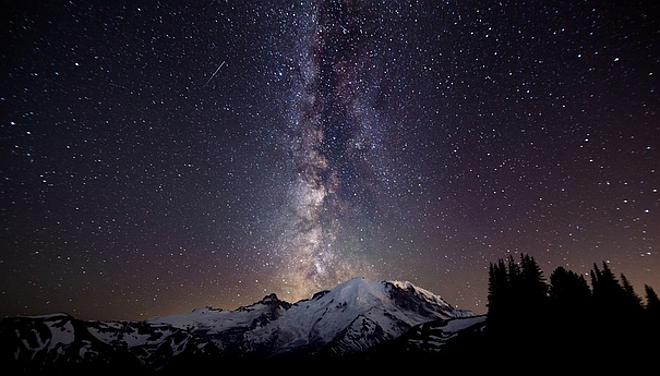
By Deborah Byrd
EarthSky.org
What could be better than a beautiful night under the Milky Way? But did you know that every night of your life is a night under the Milky Way? By that we mean … every individual star you can see with the unaided eye, in all parts of the sky, lies within the confines of our Milky Way galaxy. And the best night of the year to see it is approaching.
Our galaxy is estimated to be some 100,000 light-years wide and only about 1,000 light-years thick. That’s why the starlit band of the Milky Way, which is visible in the evening this month, appears so well defined in our sky. Gazing into it, we’re really looking edgewise into the thin plane of our own galaxy.
 |
The image above gives you an idea of the awesome beauty of our Milky Way galaxy in the night sky. It’s mosaic of multiple shots on large-format film. It comprises all 360 degrees of the galaxy from our vantage point. Photography was done in Ft. Davis, Texas for the northern hemisphere shots and from Broken Hill, New South Wales, Australia, for the southern portions.
Note the dust lanes, which obscure our view of some features beyond them. Note that the galaxy is brightest at its center, where most of the stars – and a possible hidden giant black hole – reside. This image shows stars down to 11th magnitude – fainter than the eye alone can see. Still, if you’re standing under a clear, dark night sky, you’ll see the Milky Way clearly as a band of stars stretched across the sky on late summer evenings.
The band of the Milky Way is tough to see unless you’re far from the artificial lights of the city and you’re looking on a night when the moon is down.
At present, the waxing gibbous moon is washing the fainter stars of the Milky Way from the night sky After today – September 29 – the waxing moon will stay out longer each night, until the full Harvest Moon arrives on October 5.
By October 10 or thereabouts, the waning moon will provide moon-free skies for an evening view of the Milky Way.
If you do look in a dark country sky, you’ll easily spot the Milky Way. And, assuming you’re looking from the Northern Hemisphere, you’ll notice that it gets broader and richer in the southern part of the sky, in the direction of the constellations Scorpius and Sagittarius.
This is the direction toward the galaxy’s center. If you’re in the Southern Hemisphere, the galactic center is still in the direction of Sagittarius.